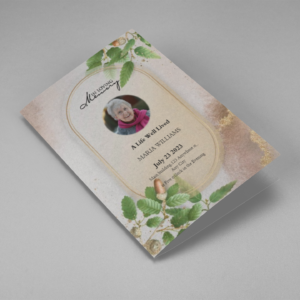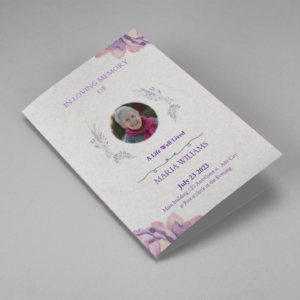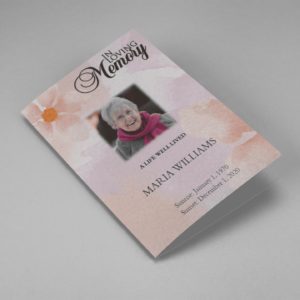Writing an obituary can be a daunting task, especially during a time of grief. However, having a template to follow can provide structure and guidance, making the process more manageable. In this comprehensive guide, we’ll walk you through the steps of creating an obituary template that honors your loved one’s life and legacy.
How to Write an Obituary Template: A Step-by-Step Guide
Losing a loved one is never easy, and writing an obituary can be a daunting task during such a difficult time. However, creating an obituary is a meaningful way to honor the life of the deceased and share their story with others. To help you through this process, we’ve created a step-by-step guide on how to write an obituary template.
Step 1: Gather Information
Before you start writing, gather all the necessary information about the deceased. This includes their full name, age, date of birth, date of death, place of residence, and any significant life events or achievements.
Step 2: Begin with a Brief Introduction
Start the obituary with a brief introduction that includes the deceased’s full name, age at the time of death, and place of residence. You may also include their date of birth if you wish.
Step 3: Provide a Summary of Their Life
In this section, provide a summary of the deceased’s life. Include information about their upbringing, education, career, hobbies, interests, and any other notable aspects of their life. This is where you can paint a picture of who the person was and what they meant to those around them.
Step 4: Include Family Details
List the immediate family members who survive the deceased, including spouses, children, siblings, and grandchildren. You may also mention other close relatives or friends if you wish.
Step 5: Mention Funeral or Memorial Service Details
If applicable, include information about the funeral or memorial service, such as the date, time, and location. You may also include any special requests or instructions regarding the service.
Step 6: Add a Closing Statement
Conclude the obituary with a closing statement that expresses gratitude for the life of the deceased and offers condolences to those who are mourning.
Sample Obituary Template
[Full Name of the Deceased], [Age at Death], of [Place of Residence], passed away peacefully on [Date of Death]. [He/She] was born on [Date of Birth] in [Place of Birth] to [Parents’ Names].
[Full Name] graduated from [School/University] with a degree in [Degree]. [He/She] went on to have a successful career as a [Profession] and was known for [Notable Achievements or Contributions].
[Full Name] was a loving [Relation] to [Spouse/Partner], [Children’s Names], and [Number] grandchildren. [He/She] will be deeply missed by [his/her] family and friends.
A funeral service to celebrate [Full Name]’s life will be held on [Date] at [Time] at [Location]. In lieu of flowers, donations can be made to [Charity].
Role Of Obituary Template In Funeral Programs
Obituary templates play a crucial role in funeral programs by providing a structured format for honoring the deceased and informing attendees about the person’s life and passing. Here’s how they contribute:
- Consistency: Templates ensure that all essential information is included in a standardized format, maintaining consistency across multiple obituaries in a program.
- Efficiency: They save time and effort for those creating the program by offering a ready-made framework, allowing them to focus on personalizing the tribute rather than formatting.
- Clarity: Templates help in organizing information logically, making it easier for readers to follow and understand the details of the deceased’s life and the funeral arrangements.
- Personalization: While providing a structured format, templates also offer flexibility for personal touches, enabling families to customize the obituary to reflect the individual’s unique personality and life story.
- Memorialization: By capturing key moments and attributes of the deceased, the obituary template aids in creating a lasting memorial that can be cherished by family and friends attending the funeral and kept as a memento.
Funeral Obituary Templates
-
Searching for a Oak Leaf With Gold Oval Frame Half Page Funeral Program that is easy to print and amass and has a cutting-edge look? The Oak Leaf With Gold Oval Frame Half Page Funeral Program is the Perfect decision because it measures 8.5”x 5.5”.
- No Limitation on Content, Edit anything
- Edit anytime – unlimited revisions even after purchased
- Get a printable PDF downloaded to get it printed on your own.
-
Searching for a Brown and White Classic Funeral Program Half Page Program that is easy to print and amass and has a cutting-edge look? The Brown and White Classic Funeral Program Half Page Program is the Perfect decision because it measures 8.5”x 5.5”.
- No Limitation on Content, Edit anything
- Edit anytime – unlimited revisions even after purchased
- Get a printable PDF downloaded to get it printed on your own.
-
Searching for a Purple Elegant Watercolor Half Page Funeral Program Template that is easy to print and amass and has a cutting-edge look? The Purple Elegant Watercolor Half Page Funeral Program Template is the Perfect decision because it measures 8.5”x 5.5”.
- No Limitation on Content, Edit anything
- Edit anytime – unlimited revisions even after purchased
- Get a printable PDF downloaded to get it printed on your own.
-
Searching for a Cream and Green Photo Obituary Half Page Program that is easy to print and amass and has a cutting-edge look? The Cream and Green Photo Obituary Half Page Program is the Perfect decision because it measures 8.5”x 5.5”.
- No Limitation on Content, Edit anything
- Edit anytime – unlimited revisions even after purchased
- Get a printable PDF downloaded to get it printed on your own.
-
Searching for a Cream Simple Elegant Photo Church Half Page Program that is easy to print and amass and has a cutting-edge look? The Cream Simple Elegant Photo Church Half Page Program is the Perfect decision because it measures 8.5”x 5.5”.
- No Limitation on Content, Edit anything
- Edit anytime – unlimited revisions even after purchased
- Get a printable PDF downloaded to get it printed on your own.
-
Searching for a Samovar Silver Half Page Funeral Program Template that is easy to print and amass and has a cutting-edge look? The Samovar Silver Half Page Funeral Program Template is the Perfect decision because it measures 8.5”x 5.5”.
- No Limitation on Content, Edit anything
- Edit anytime – unlimited revisions even after purchased
- Get a printable PDF downloaded to get it printed on your own.
-
Searching for an Elegant Beige Half Page Funeral Program Template that is easy to print and amass and has a cutting-edge look? The Elegant Beige Half-Page Funeral Program Template is the Perfect decision because it measures 8.5”x 5.5”.
- No Limitation on Content, Edit anything
- Edit anytime – unlimited revisions even after purchased
- Get a printable PDF downloaded to get it printed on your own.
-
Searching for a White Floral Pro Half Page Funeral Program Template that is easy to print and amass and has a cutting-edge look? White Floral Pro Half Page Funeral Program Template is the Perfect decision because it measures 8.5”x 5.5”.
- No Limitation on Content, Edit anything
- Edit anytime – unlimited revisions even after purchased
- Get a printable PDF downloaded to get it printed on your own.
-
Searching for a Grey and Burgundy Elegant Half Page Funeral Program Template that is easy to print and amass and has a cutting-edge look? Grey and Burgundy Elegant Half Page Funeral Program Template is the Perfect decision because it measures 8.5”x 5.5”.
- No Limitation on Content, Edit anything
- Edit anytime – unlimited revisions even after purchased
- Get a printable PDF downloaded to get it printed on your own.
-
Searching for a Soft Green and Grey Minimalist Floral Half Page Funeral Program Template that is easy to print and amass and has a cutting-edge look? Soft Green and Grey Minimalist Floral Half Page Funeral Program Template is the Perfect decision because it measures 8.5”x 5.5”.
- No Limitation on Content, Edit anything
- Edit anytime – unlimited revisions even after purchased
- Get a printable PDF downloaded to get it printed on your own.
-
Searching for a Gray Elegant Oval Frame Half Page Funeral Program Template that is easy to print and amass and has a cutting-edge look? Gray Elegant Oval Frame Half Page Funeral Program Template is the Perfect decision because it measures 8.5”x 5.5”.
- No Limitation on Content, Edit anything
- Edit anytime – unlimited revisions even after purchased
- Get a printable PDF downloaded to get it printed on your own.
-
Searching for a Blue Organic Minimal Half Page Funeral Program Template that is easy to print and amass and has a cutting-edge look? Blue Organic Minimal Half Page Funeral Program Template is the Perfect decision because it measures 8.5”x 5.5”.
- No Limitation on Content, Edit anything
- Edit anytime – unlimited revisions even after purchased
- Get a printable PDF downloaded to get it printed on your own.
-
Searching for a Pink and Orange Watercolour Half Page Funeral Program Template that is easy to print and amass and has a cutting-edge look? Pink and Orange Watercolour Half Page Funeral Program Template is the Perfect decision because it measures 8.5”x 5.5”.
- No Limitation on Content, Edit anything
- Edit anytime – unlimited revisions even after purchased
- Get a printable PDF downloaded to get it printed on your own.
-
Searching for a Pink Floral Paper Half Page Funeral Program Template that is easy to print and amass and has a cutting-edge look? Pink Floral Paper Half Page Funeral Program Template is the Perfect decision because it measures 8.5”x 5.5”.
- No Limitation on Content, Edit anything
- Edit anytime – unlimited revisions even after purchased
- Get a printable PDF downloaded to get it printed on your own.
Funeral Programs : Helping Videos
Frequently Asked Questions On Writing Obituary
Writing an obituary can be a challenging task, but by following this template, you can create a heartfelt tribute to your loved one that honors their life and legacy. Remember to take your time and reflect on the life of the deceased as you write.Here are some mostly asked questions on ‘how to write an obituary’ were discussed below:
Why is it important to write an obituary?
An obituary is a way to honor the life of the deceased, share their story with others, and provide information about funeral arrangements.
What information should be included in an obituary?
An obituary should include the full name of the deceased, their age, date of birth, date of death, place of residence, and information about surviving family members. It may also include details about the person’s life, achievements, and interests.
How long should an obituary be?
There is no set length for an obituary, but it is typically around 200-500 words. However, it can be shorter or longer depending on the amount of information you wish to include.
Can I include a photo in the obituary?
Yes, you can include a photo in the obituary. Choose a photo that captures the essence of the deceased and their personality.
Can I update the obituary after it has been published?
Yes, you can update the obituary after it has been published.















